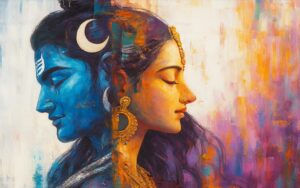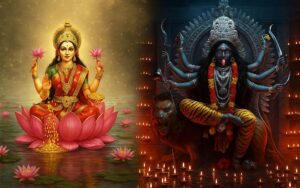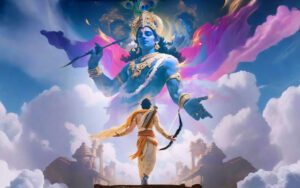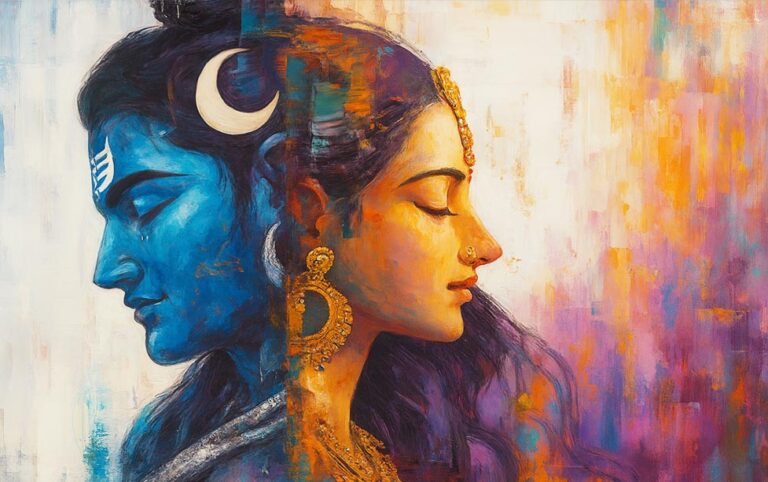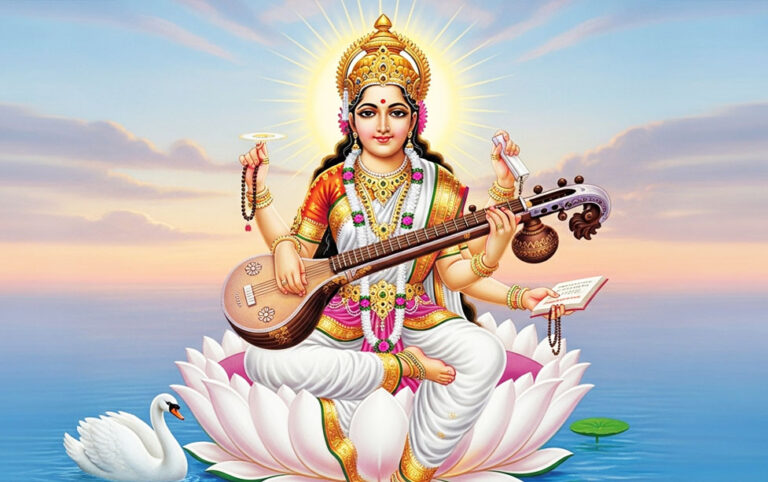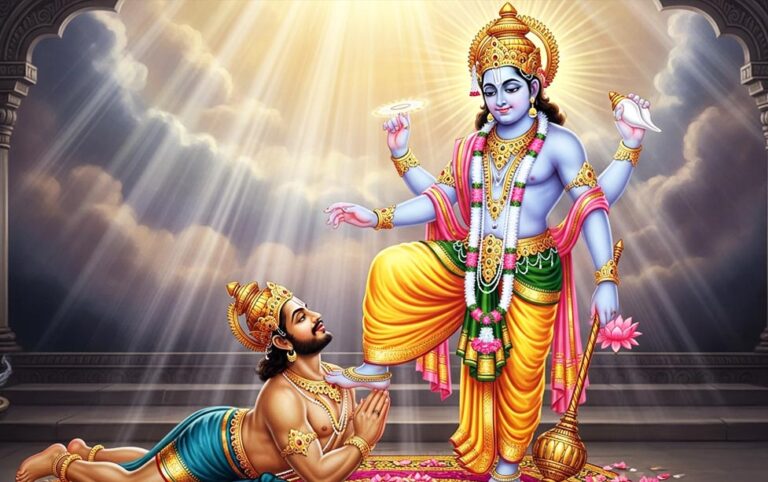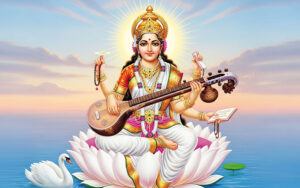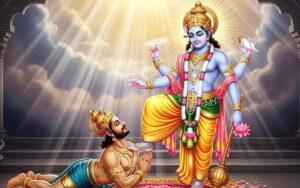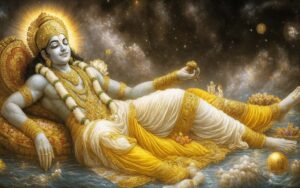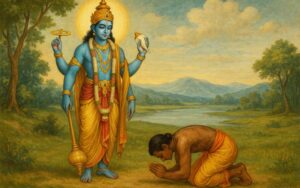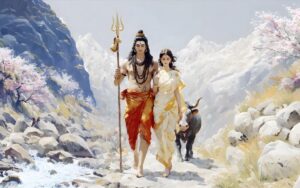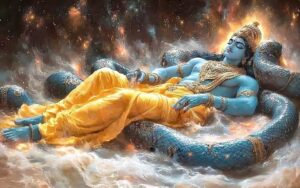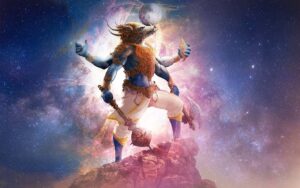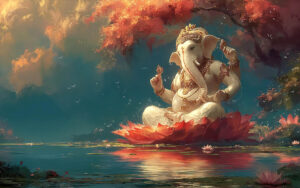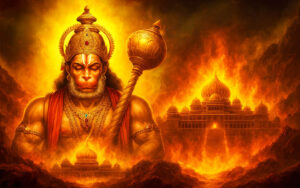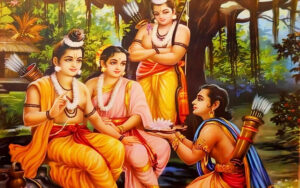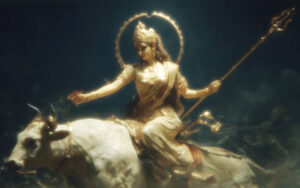
No time for reading the blog? Give it a listen on Spotify in English.

Sanatana Dharma beautifully weaves together love, inclusivity, and the duty to eradicate adharma – revealing how compassion and righteous action unite in the cosmic dance of existence.
Sanatana Dharma is a profound spiritual tradition that embodies eternal truths and diverse paths to enlightenment. It harmonizes seemingly contradictory principles—love and war, peace and action—into a cohesive philosophy aimed at maintaining cosmic and societal balance.
This blog explores how Sanatana Dharma advocates for devotion, peace, and inclusivity while recognizing the necessity of righteous action to combat adharma (unrighteousness).
Love and Devotion: The Heart of Bhakti
At its core, Sanatana Dharma celebrates love (prema) and devotion (bhakti) as paths to divine union.
Krishna and Radha: The Bhagavata Purana illustrates Krishna’s playful yet profound love with the gopis, symbolizing the soul’s yearning for the divine. His flute calls devotees to transcend ego and merge in blissful devotion.
Rama’s Righteous Love: In the Ramayana, Rama’s unwavering dedication to his wife Sita and his subjects epitomizes dharma-infused love. His exile and trials highlight sacrifice for collective good.
Shiva’s Compassion: As Ardhanarishvara (half-male, half-female), Shiva embodies unity beyond duality. His role as a gentle ascetic meditating for humanity’s welfare contrasts with his fierce protector aspect.
Peace and Inclusivity: Embracing Pluralism
Sanatana Dharma prioritizes inner peace (shanti) and respects diverse spiritual journeys.
Ahimsa (Non-Violence): The Isa Upanishad teaches, “All life is interconnected,” urging reverence for all beings.
Inclusivity: The Rig Veda (1.164.46) declares, “Truth is One, sages call it by many names.” This ethos welcomes pluralism, evident in India’s historical coexistence of religions.
Shiva’s Cosmic Dance: As Nataraja, Shiva dances within a ring of fire, dissolving the universe to recreate it—symbolizing cyclical renewal and acceptance of change.
Annihilating Adharma: The Duty of Righteous Action
When adharma threatens cosmic order, Sanatana Dharma sanctions measured force.
Krishna in the Bhagavad Gita: On Kurukshetra’s battlefield, Krishna urges Arjuna to fight as a Kshatriya’s duty (svadharma). He emphasizes detached action (nishkama karma): “Better to die in one’s dharma; another’s dharma is perilous” (Gita 3.35).
Rama’s War Against Ravana: Rama’s defeat of the demon-king Ravana underscores protecting the vulnerable. His initial attempts at diplomacy highlight violence as a last resort.
Shiva as Destroyer: Shiva annihilates demons like Tripurasura, restoring balance. His trishula (trident) represents the destruction of ignorance, desire, and inequity.
Synthesis: Balancing Compassion and Justice
These dualities reflect life’s complexity. Love and peace are ideals, yet adharma demands action.
Context Matters: The Gita distinguishes selfless duty from aggression. Krishna supports war to uphold justice, not conquest.
Cyclic Renewal: Vishnu’s avatars, like Rama and Krishna, descend in dark ages (yugas) to restore dharma, affirming that preservation requires both benevolence and strength.
Inner and Outer Battles: While stories depict physical battles, they metaphorically urge battling inner vices—anger, greed, and ego.
Sanatana Dharma’s wisdom lies in its adaptability. Today, it inspires standing against oppression while fostering interfaith harmony. It teaches that true peace arises not from passivity but from courageously protecting the vulnerable.
As Krishna says, “Whenever dharma declines, I manifest to protect the righteous” (Gita 4.7–8). In a fractured world, this balance of compassion and justice remains a guiding light.
Om Shanti (Peace be unto all).



